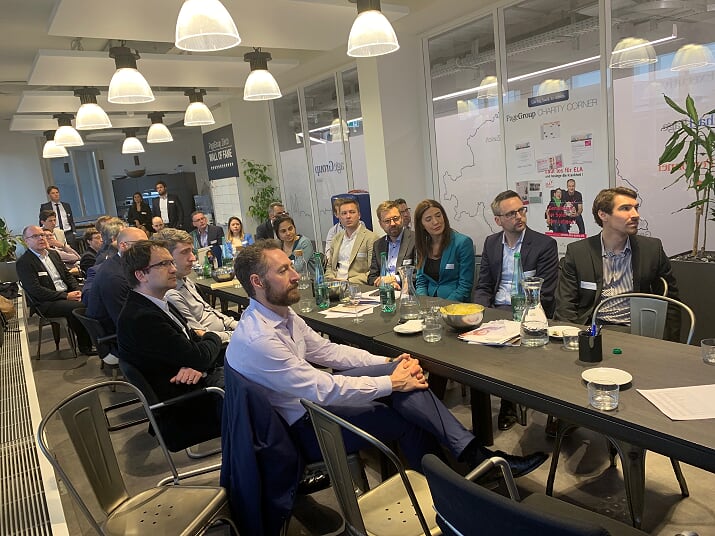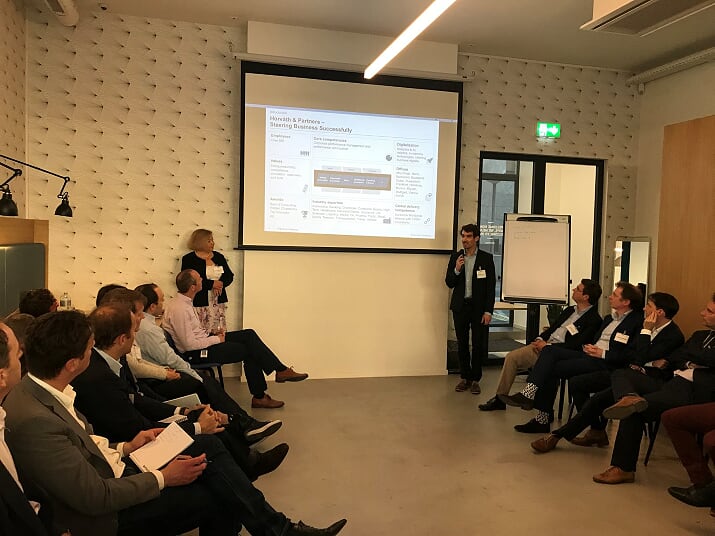 On 21st May 2019, 35 senior finance professionals gathered in the heart of Geneva for discussing “Power of FP&A Predictive Analytics”. Two days later there was a Zurich FP&A Board meeting which was devoted to the same subject.
On 21st May 2019, 35 senior finance professionals gathered in the heart of Geneva for discussing “Power of FP&A Predictive Analytics”. Two days later there was a Zurich FP&A Board meeting which was devoted to the same subject.
The Geneva event was hosted by IWG and sponsored by Page Executive / Michael Page and CCH Tagetik. Page Executive and CCH Tagetik also sponsored the Zurich FP&A Board.
Introduction
The Swiss FP&A Board meetings have been very inspiring in many ways with this topic that will have a significant impact on FP&A in the next coming years.
After a short introduction of the FP&A Board and its purpose that is to identify and support new trends, skill sets and innovations, we started with a short survey of who was using predictive analytics. In Geneva, it turned out that 8% used this tool, 36% are in a starting phase and 56% do not use it at all.
The Boards defined predictive analytics as the practice of extracting information from existing data sets in order to determine patterns and predict future outcomes and trends.
This allows real-time scenario planning by identifying and simulating changes to key drivers. Scenarios can be changed very easily. However, to use predictive analytics successfully, you need to
- Know where you want to go by clearly defining the goals
- Have a correct and reliable set of data

“Algorithmic steering in Finance and Controlling”
At both meetings, we had the opportunity to welcome Marco Maisenbacher, Senior Quantitative Business Modeller at Horvath & Partners. Marco shared his invaluable experience and expertise in predictive analytics to move from a reactive analytical model to a proactive predictive model.
We reviewed the 3 key mathematical models used (regression, classification and time series) but also how predictive analytics can be applied for the finance community regarding planning, accounting, treasury, risks and controlling. Marco indicated that finance is only one field of application of predictive analytics among others. Predictive analytics should use multiple sources to be fully integrated (procurement, engineering, logistics…) in order to steer business successfully.
Moreover, the following ingredients are key to have successful implementation:
- Develop a model for the business, not with a disconnect between data scientists and the business (not driven by external consultants or IT department)
- Provide relevant data (at least 2 years of data available)
- Get full support from top management
- Set realistic expectations
- Involve relevant teams from different areas in the organization
- Review and adjust the model when receiving the findings – any material special case (one-time item, particular event…) should be excluded from the assessment
Regarding the time-frame for successful implementation, Marco indicated that we can see the 1st results after 6 months but it takes more than a year to have the full algorithm integrated into processes.
He went then trough examples fully relevant for the finance community, such as prediction of price variation.

Conclusions from Group Work
After this case study, participants in both cities formed 3 groups and brainstormed about the steps in implementing FP&A analytics. Key findings were as follows:
- Agree the project with senior management and set high-level objectives
- Define clear objectives (increase revenue, improve forecast accuracy…)
- Involve business users from an early stage, in combination with data scientists, integration experts and senior management
- Collect relevant data (check the quality of data and what data are actually relevant). However, before going forward, it is important to assess associated costs, reliability, frequency of collection, storage, sharing and data security
- Data modelling is an iterative process – initial outcomes are to be reviewed as potentially some of the hypotheses and key drivers can be modified (continuous improvement). For example, analysis can result in identifying additional business drivers.
- Algorithms should be designed and checked by data scientists / data modelling professionals, while the validation of model outputs should be done by internal experts in their field (i.e. sales, finance, logistics)
- Create a model and plan it to the lowest level of users
- Once aligned, organisation needs to be prepared for change management (communication, action plans) and define targets, KPIs and how to track them.

The formal part of the meetings was concluded based on the model developed by Akzo Nobel, indicating that key components are people, tooling, data and process which actually validated the findings shared by the groups.
Networking continued long after the meetings were officially over, giving a great opportunity to participants to connect and further discuss predictive analytics around a glass of wine. These events represented a unique opportunity to meet with passionate and talented finance professionals around topics that are going to be essential for the next coming years.

